Red-Shouldered Hawk Study
|
Home | Natural History | Living with Red-Shouldered Hawks | Research | Current Projects | Publications | Photographs | News | Research Team | Contact Us |
Genetics and Extra-pair Paternity Project |
In 2018–2019, Ania Wrona, a graduate student at the University of North Texas, joined the research team to study the genetic structure and mating systems of suburban Red-shouldered Hawks. The team visited previously-known territories and determined whether nests were occupied. Nests were monitored from February – June (courtship through fledging). At selected nests, a researcher climbed to the nest during the nestling period; we banded the nestlings, and took a tiny blood sample before returning them to their nest. We also trapped parent hawks at most nest sites, banded them, took a small blood sample, and released them promptly. Trapping adult hawks was accomplished with one of two techniques. In some cases, we used a bal chatri trap covered with nooses and containing a mouse that served as bait (and was unharmed during the trapping). In other cases, a robotic fake owl surrounded by mist nets was used; the owl is a natural predator of Red-shouldered Hawks, which will dive at the owl and then become entangled in the nets. In all cases, we removed the birds from the trap immediately and released them unharmed after sampling and banding. The blood samples will be used for genetic testing and to determine parentage of the nestlings. 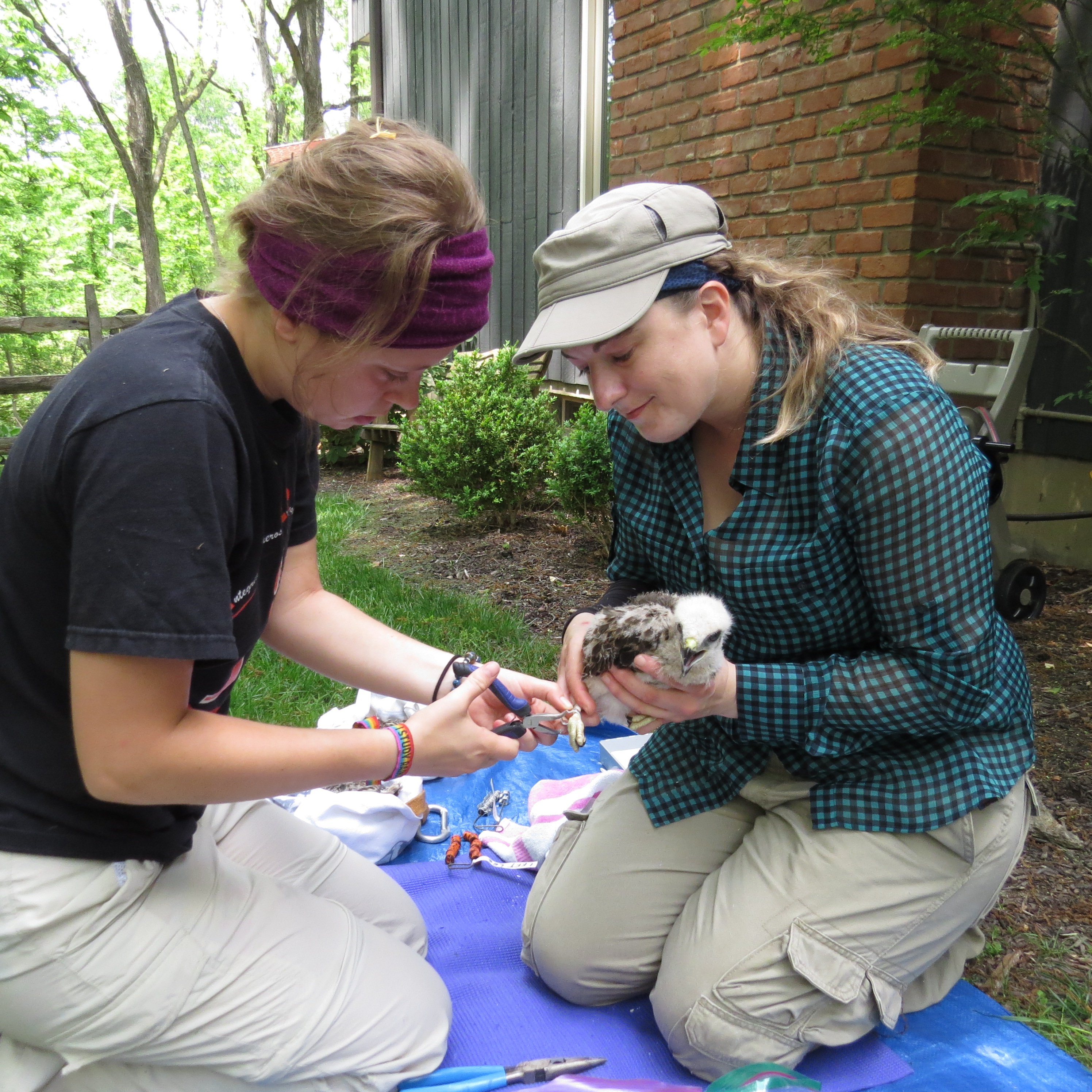
Until recently, birds that appeared to be monogamous (called “socially monogamous birds”) were assumed to also be sexually faithful pairs (“genetically monogamous”). However, advances in genetic techniques in the last 30 years have showed that fewer than 25% of all socially monogamous bird species practice true genetic monogamy. Among raptors, genetic monogamy seems to be the most common. However, few raptors species have been studied (<25), and even fewer of those occupy urban/suburban areas (<5). Among studies of extra-pair paternity (EPP) frequency in raptors, the highest rate of EPP was found in an urban population of Cooper’s Hawks in Milwaukee: 34% (15/44) of the broods analyzed in that population contained extra-pair young. It is not known how much the effects of their environment played a role in this breeding strategy, For her Master’s project, Ania will determine the EPP frequency in Red-shouldered Hawks through the use of molecular markers on blood samples acquired from adults and nestlings. Through this study, we will gain a better understanding of this species’ mating systems, and the factors that may influence it, such as breeding density, adult body size, and the number of young. Although the Cincinnati population of Red-shouldered Hawks appears to be stable at this time, urban and suburban landscapes are prone to rapid changes in amount of structures and available green spaces as the human population increases. Understanding how species are successfully reproducing under current conditions is vital to ensure the population’s ability to persist as humans continue to change the habitat around them. |
Videos of Nesting Red-shouldered Hawks |
|
|
In 2011 and 2012, Sara Johnson Miller, then a
graduate student at Arkansas State University, joined the research team
and used video time-lapse cameras
to study nesting behavior in Cincinnati. At 15 nests, cameras were installed at occupied nests prior to
egg-laying. At 10 nests, cameras went up after eggs hatched, when
the nestlings were estimated to be 3-12 days old. The cameras remained
in place until the nest failed or fledged young. Within the first week
of hatching, nestlings were marked on their heads and backs with Sprayolo non-toxic liquid livestock dye to facilitate differentiation of
nestlings in the video. Researchers also climbed again to band (USGS & colored
number-letter bands) the nestlings and to re-paint their heads after
initial paint began to fade.
Our video monitoring
of nests provided new insights into incubation behavior and sibling
relationships and yielded valuable information on predation and other
causes of nest failure. |
Home | Natural History | Living with Red-Shouldered Hawks | Research | Current Projects | Publications | Photographs | Research Team | Contact Us |
incubation varied amoung
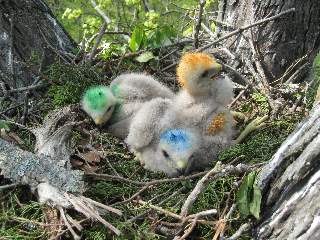
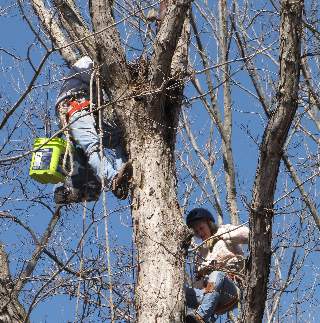
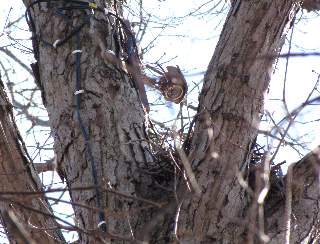 Of the
15 nests that received a camera prior to egg-laying, all pairs
laid eggs, and most of these pairs fledged young, while the remaining
nests failed due to predation or nest disturbance. These results show
that mounting the cameras during the courtship phase, after the adults
occupied the nest, did not seem to disturb the birds. This method also
provided more accurate and complete data for an entire nesting period
than mounting cameras post-hatching.
Of the
15 nests that received a camera prior to egg-laying, all pairs
laid eggs, and most of these pairs fledged young, while the remaining
nests failed due to predation or nest disturbance. These results show
that mounting the cameras during the courtship phase, after the adults
occupied the nest, did not seem to disturb the birds. This method also
provided more accurate and complete data for an entire nesting period
than mounting cameras post-hatching.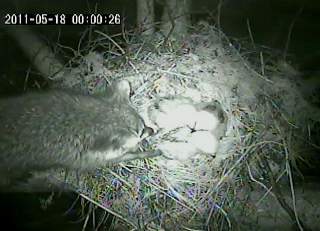 There is good evidence to support the idea that RSHAs
have partial incubation, and Sara found start of incubation varied among individuals but many birds
began full incubation with the laying of
the penultimate egg. The video data showed that more sibling
aggression occurred during week 2 than during week 3. These data suggest that the
dominance hierarchy is established early and may influence
the probability of success of each nestling through the remainder of the
nestling period, and perhaps even after fledging.
There is good evidence to support the idea that RSHAs
have partial incubation, and Sara found start of incubation varied among individuals but many birds
began full incubation with the laying of
the penultimate egg. The video data showed that more sibling
aggression occurred during week 2 than during week 3. These data suggest that the
dominance hierarchy is established early and may influence
the probability of success of each nestling through the remainder of the
nestling period, and perhaps even after fledging.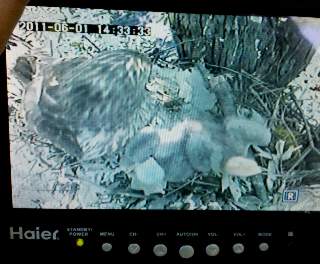
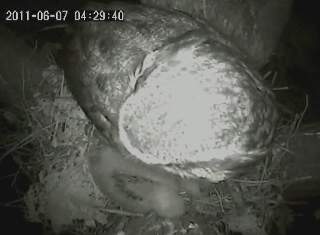 Sara has finished her Master's thesis and it is available from Arkansas
State University.
Sara has finished her Master's thesis and it is available from Arkansas
State University.